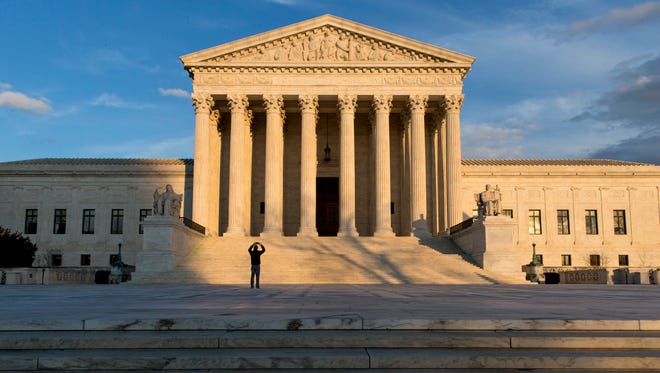Supreme Court blocks Virginia districts over use of race
WASHINGTON — The Supreme Court dealt another blow Wednesday against the use of race in drawing election districts, demanding further review of 11 state legislative districts that Virginia Republicans designed to ensure that 55% of eligible voters were black.

The 7-1 ruling was at least a temporary victory for Democrats who challenged 12 districts drawn after the 2010 Census by the GOP-led state Legislature. They argued that the maps were drawn to pack more blacks than necessary into those districts, in order to give Republicans the advantage in many more surrounding districts.
Justice Anthony Kennedy wrote in his opinion that districts can be held unconstitutional "if race for its own sake is the overriding reason for choosing one map over others" — even if the districts meet traditional redistricting criteria, such as compactness. Justice Clarence Thomas dissented in part.
But the high court did not settle the issue. The justices sent the case back to a three-judge trial court with instructions to use different criteria in determining whether the Legislature violated the Constitution by setting racial targets. And they upheld a 12th district as having a 55% black voting-age population for legitimate reasons.
The justices did not rule on a similar case from North Carolina heard the same day in December, in which Democratic challengers said two congressional districts were drawn with the same intent — to pack African Americans into some districts so that others would be safer for Republicans. That decision could come soon.
Read more:
Race, politics divide Supreme Court justices in redistricting cases
Democratic Party attorney Marc Elias heralded the Virginia ruling as a "major victory." In a briefing a day earlier, he said the two cases "could further the trend of courts cracking down on racial gerrymandering."
But the justices did not go that far. They sent the case back so that a trial court panel can decide if race was the predominant motive for the design of the 11 districts.
The Voting Rights Act of 1965 requires states to draw districts that enable African Americans to elect their chosen representatives, lest blacks not form a majority anywhere. Two decades ago, Democrats used the law to demand "majority-minority" districts. But after Republicans took over many state legislatures in 2010, they began drawing districts with what critics claim are more African Americans than necessary, in order to protect surrounding districts.
The Virginia case involves 12 House of Delegates districts in the central and southern part of the state that were drawn to include a minimum of 55% black voters. A federal district court panel upheld the lines, which Paul Clement, representing the Legislature, said were used to protect black voters and lawmakers from a potentially low African American turnout.
During oral argument, Elias said the lower court allowed legislators to "corral" black voters "because we think they all vote alike, and we don't want them infecting the neighborhood."
In his dissent, Thomas — the court's lone black justice — sympathized with the legislature's plight in trying to satisfy the Voting Rights Act without going too far. But he said, "I cannot ignore the Constitution’s clear prohibition on state-sponsored race discrimination."
